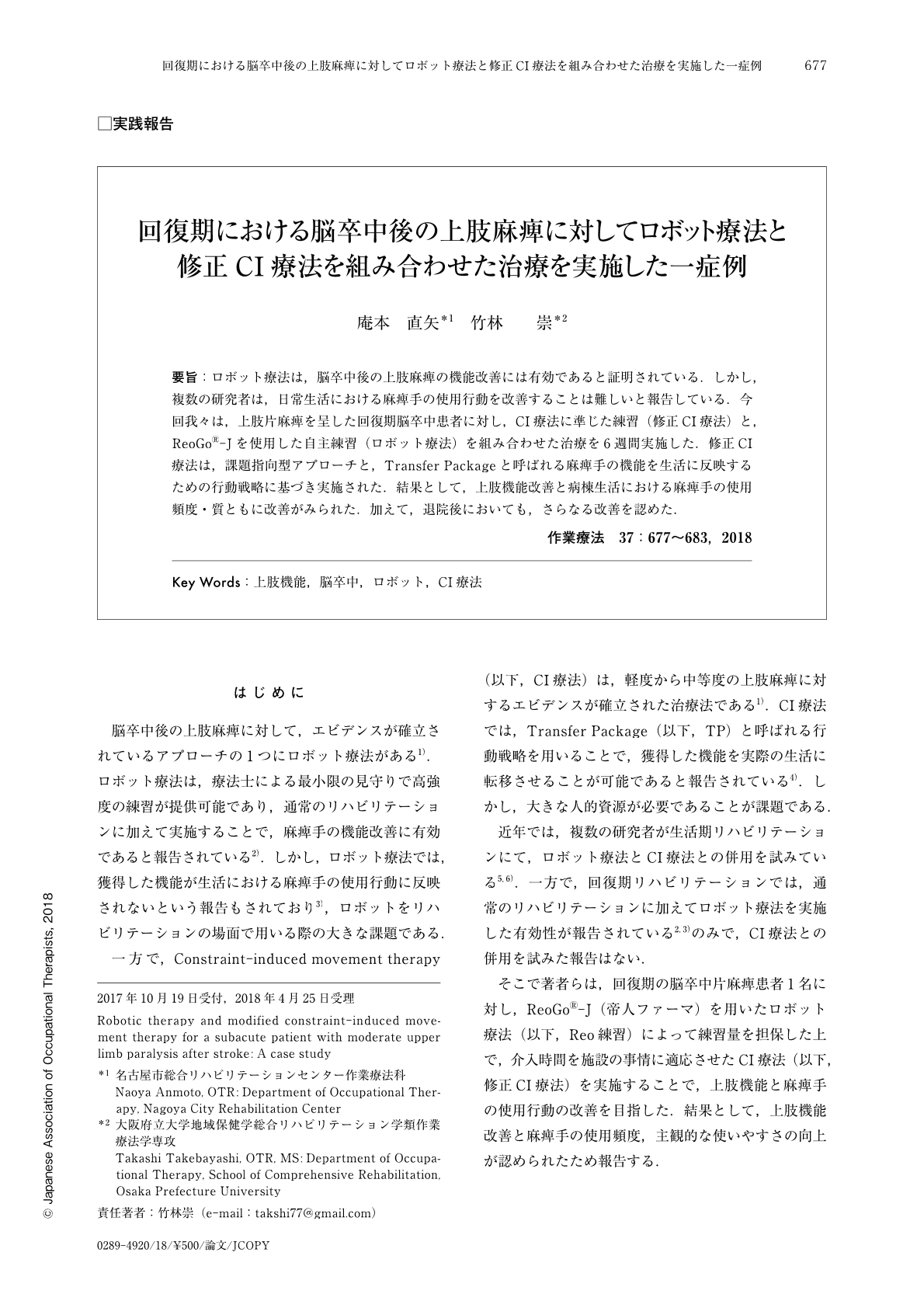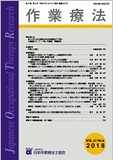Japanese
English
- 販売していません
- Abstract 文献概要
- 1ページ目 Look Inside
- 参考文献 Reference
- サイト内被引用 Cited by
要旨:ロボット療法は,脳卒中後の上肢麻痺の機能改善には有効であると証明されている.しかし,複数の研究者は,日常生活における麻痺手の使用行動を改善することは難しいと報告している.今回我々は,上肢片麻痺を呈した回復期脳卒中患者に対し,CI療法に準じた練習(修正CI療法)と,ReoGo®-Jを使用した自主練習(ロボット療法)を組み合わせた治療を6週間実施した.修正CI療法は,課題指向型アプローチと,Transfer Packageと呼ばれる麻痺手の機能を生活に反映するための行動戦略に基づき実施された.結果として,上肢機能改善と病棟生活における麻痺手の使用頻度・質ともに改善がみられた.加えて,退院後においても,さらなる改善を認めた.
Robotic therapy (RT) has proved effective in patients with upper limb paralysis after stroke. However, some researchers have reported that using robotics alone does not promote use of the affected arm in activities of daily living. We provided modified constraint-induced movement therapy (modified CIMT) and self-training using ReoGo®-J (RT) during six weeks for a convalescent patient with upper limb paralysis after stroke. Modified CIMT was based on task-oriented training and behavioral strategy, termed “Transfer Package”, to facilitate use of the affected arm in real-life. As a result, this combined approach improved not only arm function but also the amount and quality of ward-life use of the affected arm. Additionally, arm function and the amount and quality of real-world use of the affected arm were further improved after discharge.

Copyright © 2018, Japanese Association of Occupational Therapists. All rights reserved.


